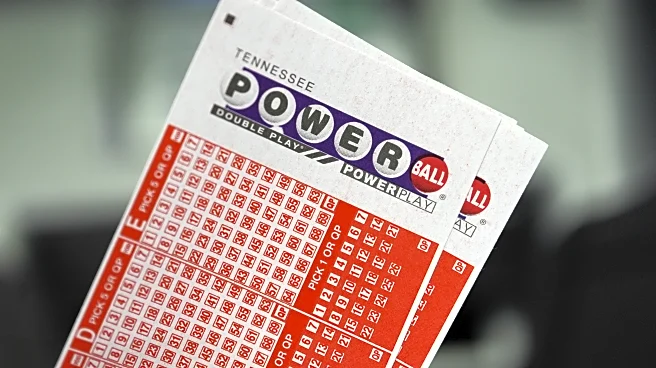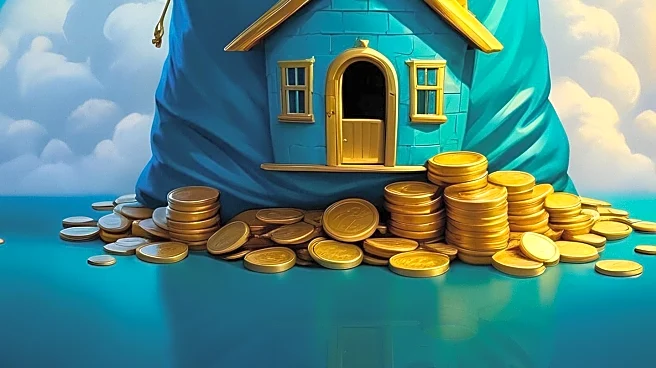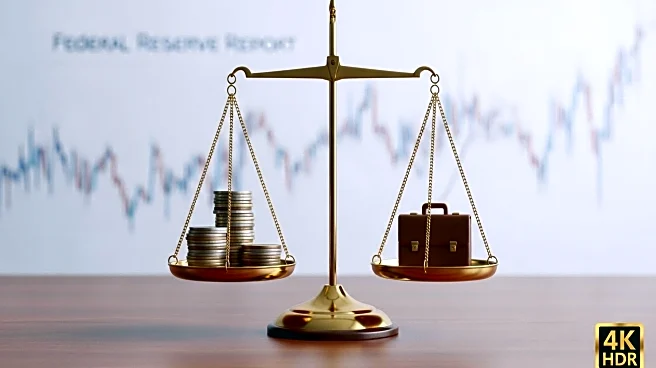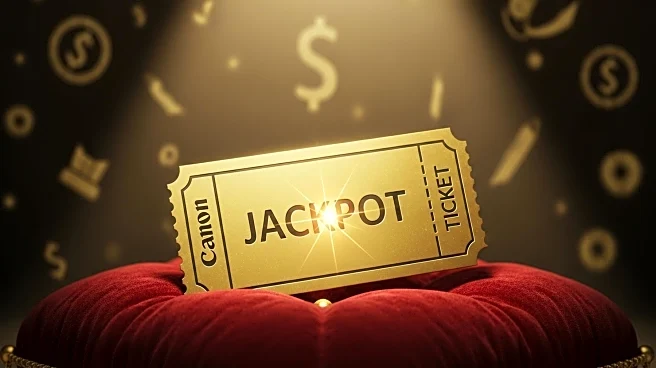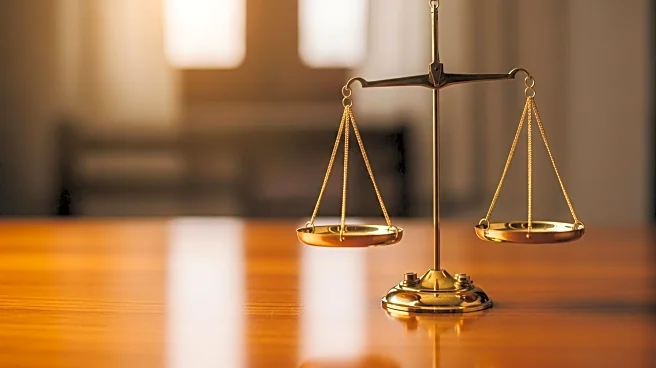What's Happening?
The Powerball jackpot has reached $1.7 billion, making it the third-largest in U.S. history. The drawing is scheduled for Saturday night, and if no winner emerges, the jackpot could surpass $2 billion by Monday. The odds of winning the jackpot are 1 in 292,201,338, requiring all six numbers to match, including the red Powerball. Smaller prizes are available for matching fewer numbers. The last jackpot over $1 billion was claimed in April 2024, with the largest since then being a $526.5 million win in March.
Why It's Important?
The massive jackpot has significant implications for winners, who must navigate complex tax regulations to determine their final payout. Each state has different tax rates, affecting the lump sum and annuity options. The potential for a $2 billion jackpot could lead to increased ticket sales and heightened public interest, impacting state lottery revenues and funding for public programs. The excitement surrounding such large jackpots can also influence consumer spending and economic activity.
What's Next?
If no winner is declared in the upcoming drawing, the jackpot will continue to grow, potentially reaching unprecedented levels. This could lead to increased media coverage and public interest, further driving ticket sales. Winners will need to decide between a lump sum or annuity payout, each with different tax implications. State governments may also see increased revenue from lottery sales, which could impact budget allocations and public services.


